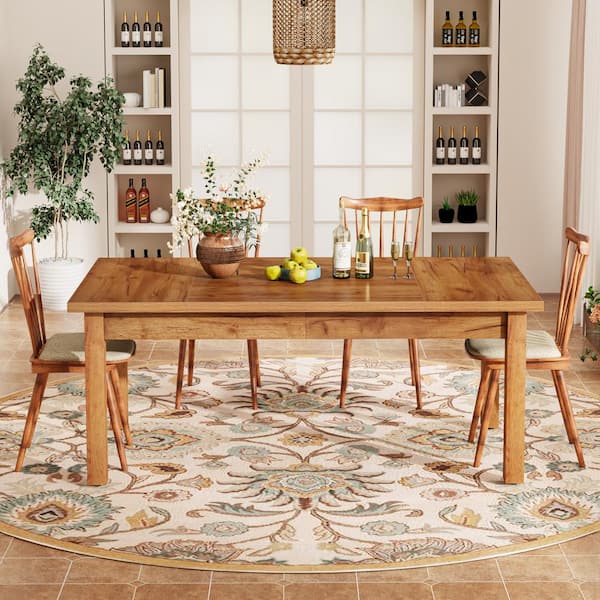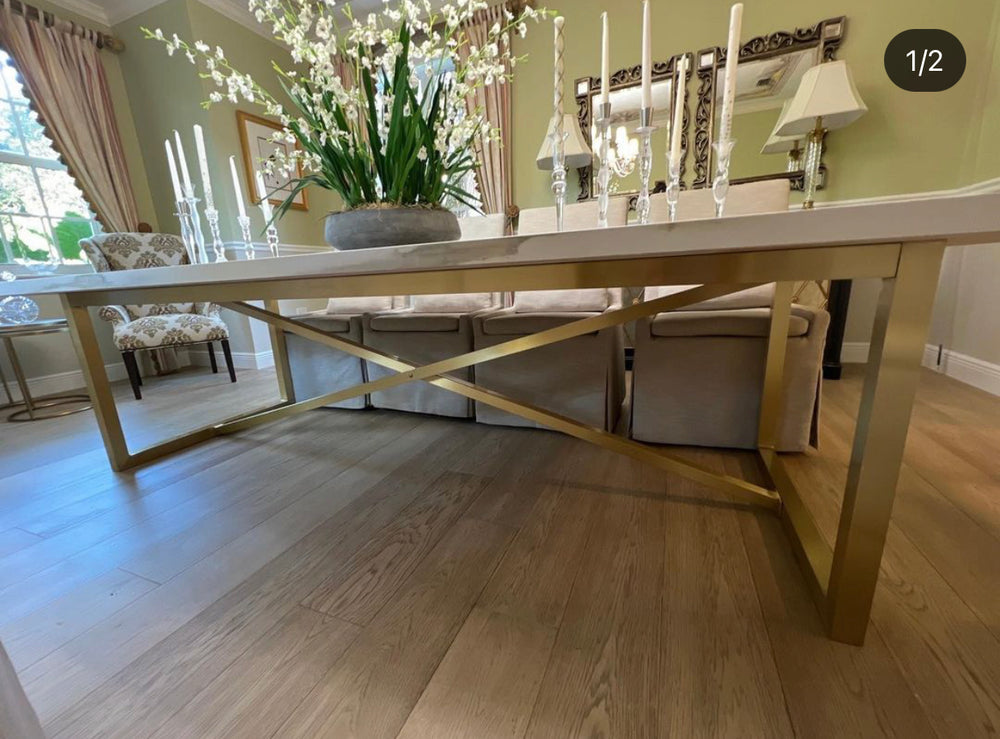Just how to Select the Perfect Dining Room Table Legs for Your Home Design
Just how to Select the Perfect Dining Room Table Legs for Your Home Design
Blog Article
A Comprehensive Consider Dining Table Leg Styles: Locating the Perfect Match
Selecting the right eating table leg design is important for both aesthetic allure and sensible performance. Conventional four legs supply ageless beauty and security, while the stand base offers increased legroom and a modern-day look. For those with bigger tables, trestle legs make sure durable support, whereas barrette legs introduce a mid-century modern-day vibe with their minimalist style. The x-shaped legs blend modern style with boosted stability. Each of these alternatives brings one-of-a-kind benefits, making the selection more than simply a matter of choice. Discover further to uncover which style flawlessly matches your eating area and lifestyle.
Typical Four Legs
Among the different sorts of eating table leg designs, the conventional four-leg style stays a classic choice for numerous homes. This traditional arrangement supplies a harmonious blend of functionality and looks, making it a seasonal fave. 4 legs give balanced assistance, ensuring the table remains stable and efficient in bearing considerable weight. This is especially helpful for families that often hold big events or utilize their table for several purposes, such as work or crafting.
From an aesthetic perspective, the typical four-leg layout can be quickly adapted to various indoor designs. Whether crafted from wood, steel, or a mix of materials, these legs can be intricately carved, sleek and minimalistic, or anything in between. Their flexibility permits them to enhance both rustic and contemporary settings perfectly.
In addition, the uncomplicated structure of the four-leg design promotes simplicity of motion and placement within a space. Unlike even more complicated bases, this style decreases obstructions, providing enough legroom for diners. In recap, the standard four-leg table leg design marries sustaining sophistication with useful capability, making it an astute selection for those seeking both form and feature in their dining furniture.
Stand Base
Commonly celebrated for its classy and space-efficient design, the stand base is a prominent choice to the conventional four-leg arrangement in table leg designs. This distinctive base normally features a solitary main column supporting the table top, which can differ in type, from ornately sculpted wood to smooth, modern-day metal. Among the key advantages of the stand base is its capacity to make best use of legroom and seating flexibility. Without edge legs, restaurants are afforded higher liberty of movement, making it a suitable selection for round and oval tables that promote even more intimate and comprehensive gatherings.
Furthermore, the pedestal base's central support can manage considerable weight, permitting for the usage of larger table tops, such as marble or thick wood. This toughness paired with its aesthetic convenience makes the pedestal base a popular choice in both conventional and modern indoor setups. It can seamlessly integrate with various design themes, from traditional beauty to minimalist modernity. The main column itself provides a canvas for elaborate designs and artistic expressions, including a component of visual interest beneath the table. In recap, the stand base integrates functionality snappy, making it an improved and sensible choice for diverse dining settings.
Trestle Legs
Trestle legs supply a robust and classic foundation for dining tables, defined by their horizontal cross-bracing and tough support light beams. Originating from middle ages times, this style has progressed yet kept its essential framework, making it a perennial favorite in both typical and contemporary setups. The central trestle light beam, typically supported by two or even more vertical articles, offers phenomenal stability, permitting for larger table sizes without the demand for extra legs.
A substantial advantage of trestle leg tables is the adequate legroom they offer. Unlike tables with four edge legs, the absence of obstructions at the table's sides provides unblocked area for chairs and restaurants, boosting comfort and availability. This makes trestle tables suitable for suiting larger celebrations, whether in a dining space or a reception hall.
From rustic farmhouse to sleek modern styles, trestle legs can be personalized to fit important source private preferences. Their long-lasting charm and useful advantages make trestle legs an engaging selection for those looking for both design and usefulness in their eating table.
Barrette Legs

The appeal of barrette legs exists in their simplicity and adaptability - dining room table legs. Available in a series of products, including steel and brass, they can be completed in countless colors to complement various indoor styles. Whether combined with a rustic wood table top or a contemporary glass surface, barrette legs easily blend functionality with a touch of classic beauty
Resilience is one more remarkable feature of hairpin legs. In spite of their fragile look, these legs are crafted to birth significant weight, making certain the eating table stays secure and safe. Additionally, they are fairly very easy to install, making them a prominent selection for do it yourself fanatics and professional furniture makers alike.
X-Shaped Legs

Built from products such as steel, timber, or a mix of both, X-shaped legs can be tailored to match different style choices. Steel find more information legs often provide a smooth and commercial feeling, perfect for loft-style houses and contemporary dining areas.
In addition, the design behind X-shaped legs ensures even weight distribution, lessening the threat of tottering and boosting durability. This makes them particularly appropriate for larger table that need extra assistance. In significance, X-shaped legs mix functional design with modern-day aesthetics, making them a timeless choice for diverse eating settings.
Verdict
A thorough understanding of dining table leg designs reveals the distinct characteristics and benefits of each style. Trestle legs make sure durable assistance for bigger tables, and barrette legs present a mid-century contemporary visual.
Report this page